Goal: Build a wine collection that fits your taste, budget, and space – without overthinking it.
Whether you want bottles to enjoy, age, or invest in, this guide walks you through setup, buying, storage, and upkeep in plain English.
Wine Collection Planning and Goal Setting
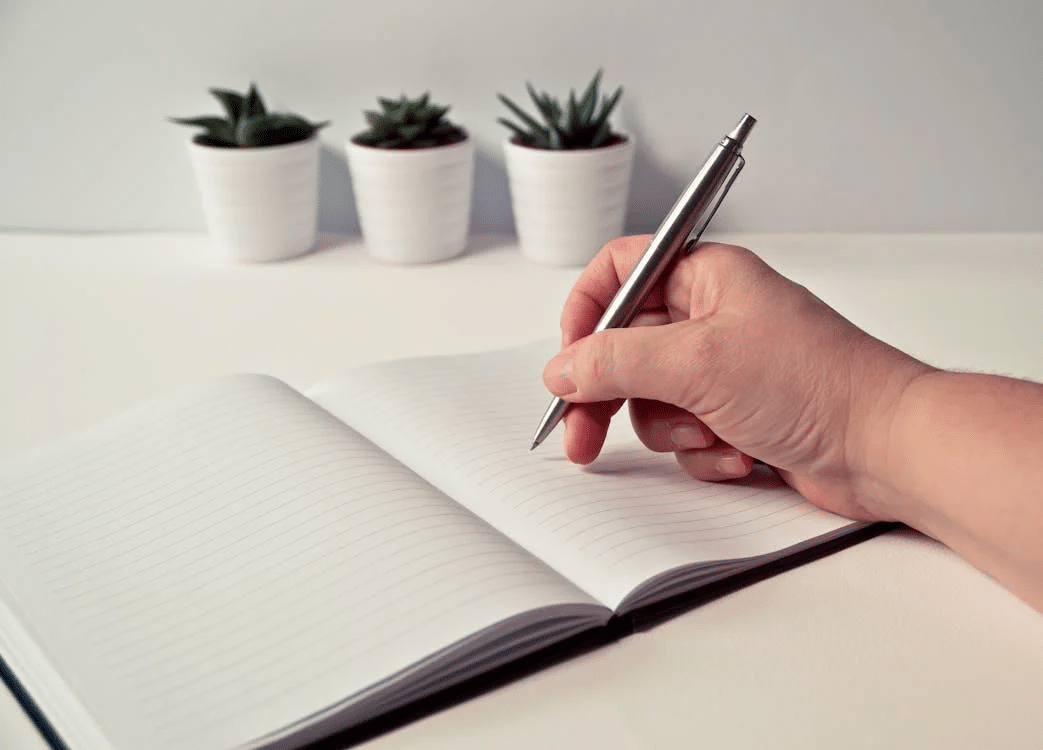
A wine collection can mean many things – so decide what yours is for.
Choose your focus
- Drink-now wines: Everyday bottles for dinners and weekends.
- Age-worthy wines: Structured reds and quality whites that improve over time (e.g. Bordeaux, Barolo, Rioja, Champagne).
- Investment wines: Limited or high-demand bottles with resale potential.
- Gifting & hosting wines: Crowd-pleasers and conversation bottles.
Plan your scope
- Goal: Drink, age, or invest?
- Size: How many bottles now, and what’s your target (e.g. 48 → 120 over 2 years)?
- Cadence: How many will you buy per month (e.g. 4–6)?
- Budget: Split roughly – 70% core wines, 20% experiments, 10% wildcards (source).
Pro tip: Never buy a bottle without knowing why you want it or when you’ll drink it.
Set concrete counts (for example, 240 bottles now to 480 in 24 months at 8 per month). Cap any producer at ≤ 12% of inventory and any region at ≤ 35%. For investment-tilt buys, meet two of three: composite 94+ from three critics, production ≤ 6,000 bottles, secondary-market turnover within 12 months. Enforce a 24-hour cool-off for carts over £300.
picture a rainy night on the Rutherford Bench, braise on the stove, one glass of cassis and pencil shavings. That is the decision you design for, not a spreadsheet flex. Hint: adopt the Piccadilly Line rule – if a bottle does not move you one stop toward your target cellar, let it pass.
With purpose set, lock storage next to protect value and flavor.
Modular Wine Rack Organization and Inventory Workflow
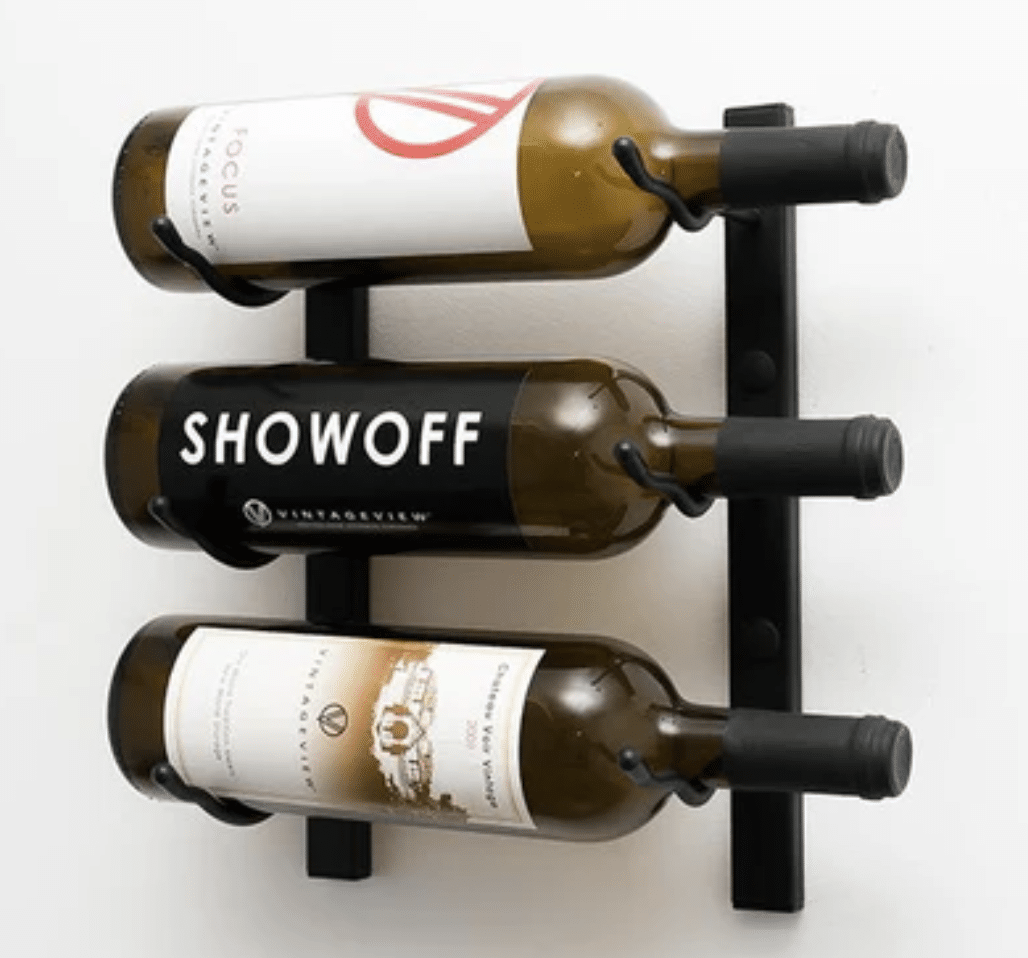
Structured systems enable scalable growth.
Scale gracefully with modular kit and simple rules.
- Modular racks: build for case depth plus display rows; label by region or drink year.
- App + QR: scan for location, purchase date, and notes.
- Case strategy: buy six for aging, two for experiments.
- Staging zone: shelf for incoming bottles waiting to be logged.
Recommended hardware: WCHQ Wine Racks – sturdy, modular, handle Bordeaux, Burgundy, Champagne, and expand neatly. Add-ons for magnums, halves, odd formats.
Layout in one minute
Left wall 0-3 year drinkers; back wall 4-9 year sleepers; right wall 10+ year keepers and large formats; eye-level weeknight picks; floor-level heavy cases.
Deep-dive upgrades
Bottle diameters: Bordeaux 76-79 mm, Burgundy 82-85 mm, Champagne 90-92 mm; specify 95-100 mm slots. A full 12-bottle case is ~14-18 kg; strap tall stacks to studs or masonry. Shelf code scheme zone – region – window – slot; mirror codes in your app. Combine case cubes and display slats; cork crumb trays under decant area. SOP: unbox, inspect fill and closures, photograph OWC markings, attach QR, log within 24 hours.
Precision add-ons
Rack load ≥ 250 kg per bay; anchors every 61 cm; anti-tip brackets on top; QR 25 × 25 mm level Q, polyester 80% RH rated; aisles ≥ 800 mm or 1,000 mm with ladders; magnum bays 120-130 mm, jeroboam 135-140 mm at 380-420 mm depth; staging bench 600 × 900 mm, 25 mm hardwood or 1.5 mm steel, 150 kg capacity.
Steal the Bodleian’s spine codes. If a guest asks for Serralunga, your hand should land on it in under 15 seconds. If not, the system hides rather than helps.
Modular racks plus labels turn growth into a controlled, searchable library.
Wine Storage Requirements for Quality and Value
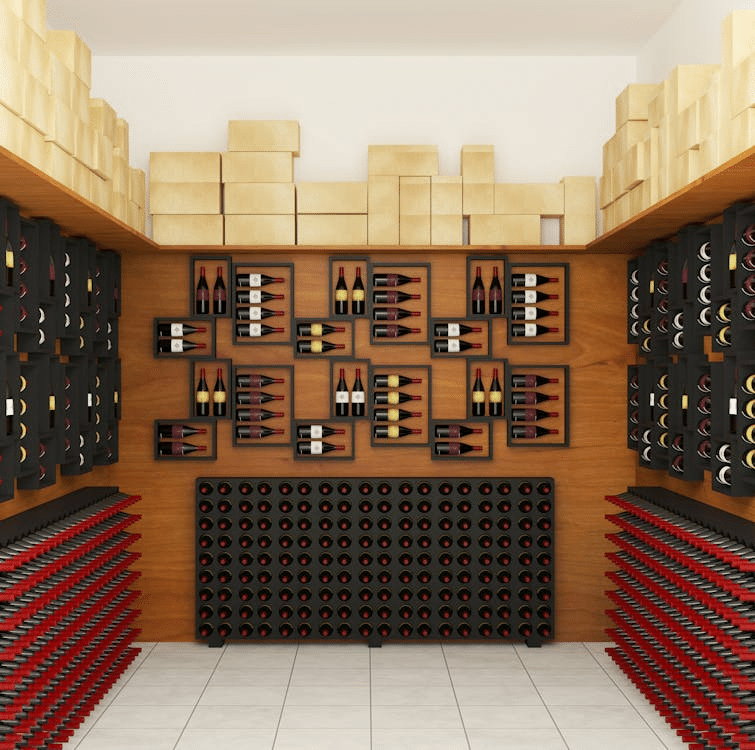
Proper storage preserves both taste and value.
Basic conditions
|
Factor |
Ideal |
Why it matters |
|---|---|---|
|
Temperature |
12–13°C (steady) |
Prevents aging too fast (source) |
|
Humidity |
60–70% |
Keeps corks from drying |
|
Light |
Dark or dim |
UV ruins wine |
|
Movement |
None |
Vibration tires wine |
|
Position |
Horizontal for corks |
Keeps corks moist |
Storage options
- Wine fridge: Great for beginners. Buy twice your current need – you’ll fill it faster than you think.
- Conditioned room: For serious collectors. Insulate and install a wine cooling unit.
- Professional offsite storage: Ideal for investment or overflow bottles.
Quick check: If your fridge or cellar moves more than 2°C per day, fix it – stability is key.
Deep-dive upgrades
Fridge checks: compressor isolation, active humidity, charcoal filtration, shelf pitch for Burgundy and Champagne. A 200-bottle unit often fits ~160 mixed. Room build: R-19 walls, R-30 ceiling, 6-mil poly vapor barrier on warm side, sealed penetrations, exterior-grade door, threshold seal. Target 1,000-1,500 BTU per 10 m² for 2.4 m ceilings, slightly oversize to reduce cycling. Place away from boilers and laundry; short lines and pitched condensate drains. Monitor with two independent Temp + RH sensors at bottle height; alert at > 2 °C moves or < 55% RH dips. Offsite facilities should offer generators, temp logs, dual-zone failover, clean agent fire suppression, and clear insurance.
Precision add-ons
Illumination under 50 lux long exposure, under 10 lux at rest; UV block 99% of 280-400 nm; vibration ≤ 0.5 mm per second RMS; shelf clearance 10-12 cm and rails ≥ 30 kg; humidifier 0.3-0.7 L per hour, dehumidifier 10-20 L per day; UPS ≥ 1,000 VA and generator sized to startup draw × 1.5; offsite written guarantee 11-14 °C with hourly logs and ± 1 °C excursions maximum.
That bright Santorini window kills Assyrtiko faster than you expect.
Hint: hide a data logger on the second row, not the door. Treat the cellar like a British Library reading room.
Control temperature, humidity, light, and movement or pay with flat flavors.
How to Buy Collectible Wine at The Best Time and Price
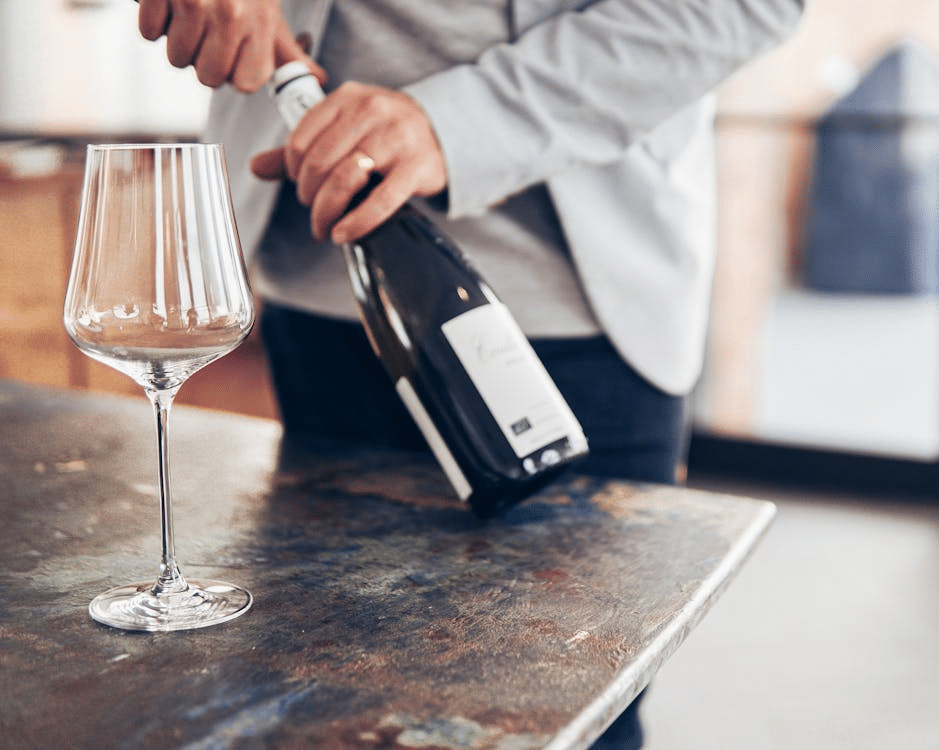
Buying wine isn’t about chasing deals; it’s about buying right.
Where to buy
- Trusted retailers or importers with storage guarantees.
- Winery mailing lists or allocations for reliable provenance.
- Auctions only from known houses with condition reports.
When to buy
- Futures: For collectible Bordeaux or Barolo (but use only reputable merchants).
- Release week: For Champagne or small producers.
- End of summer: Great time to grab discounted whites and rosés.
Price discipline
- Set a max price per bottle before browsing.
- Compare 2–3 sources before purchase.
- Skip anything with unclear storage history.
Pro tip: If a deal seems too good to be true – it usually is.
Deep-dive upgrades
Provenance tells: OWC, intact strip labels, importer lineage, capsule embossing, ullage into neck or high shoulder, age-consistent scuffing. Auction math: hammer plus 20-26% premium, tax, shipping, possible release fees; compare to adjacent vintages. Futures risk: spread across two strong merchants, keep futures under 20% of budget, pay by credit card. Vintage context: study heat spikes, harvest rain, mildew; favor producers with strict triage. Timing edges: Champagne late- or recent-disgorged, Germany after final reviews, Rioja before holidays. Track FX fees; know duty thresholds; check in-bond versus duty-paid.
Precision add-ons
Ullage for 750 ml: into neck excellent, very high shoulder acceptable, high shoulder caution, below mid shoulder investigate. Scarcity targets: under 3,000 cases for collector cuvées, under 1,000 for micro-growers. Illustrative price bands: everyday £12-£30, cellar £30-£80, prestige Champagne £120-£300, blue-chip Bordeaux or Barolo £80-£250 release. Pack-out if ambient over 24 °C or under 0 °C; cold chain over 28 °C. Case discounts 5-15% at 6-12 bottles; free shipping at £250-£500 baskets.
Triangulate: if Neal Martin praises perfume and line, Walter Speller confirms tannin finesse, and Decanter panels echo balance, confidence rises. Save screenshots with invoices.
A pre-set walk-away price and clear windows prevent regret buys.
Once bottles arrive, documentation preserves both pleasure and resale options.
Wine Cellar Inventory Tracking and Tasting Note System

Keeping records saves money and avoids wasted bottles.
What to log
- Producer, region, vintage
- Purchase date and cost
- Drink window (start and end year)
- Storage location
- Tasting notes and photos
How to stay organized
- Use QR labels or simple stickers by shelf.
- Review inventory every few months and check for duplicates or aging bottles.
- Set calendar alerts for “drink now” wines to prevent them from fading.
Deep-dive upgrades
Track disgorgement dates, lot IDs, capsule condition, label grade A to D, cork branding, barcode or QR, and storage proof. Automate monthly emails for open windows; auto-move items from long to short holds at the midpoint. Note structure with an acid scale 1-5, tannin grain terms, warmth, finish length in seconds, and food outcome. Photograph front, back, cork, ullage, capsule seam. Quarterly audit 10% and fix mis-shelves immediately.
Precision add-ons
Use Code-128 or QR with 0.4 mm modules; NFC 13.56 MHz NTAG213 for 144 bytes. Capture labels at ≥ 12 MP and export at 300 dpi. Send open-now emails on the 1st at 09:00 and SMS seven-day intervals for narrow windows. Version notes _v1, _v2 and record ABV.
Good data eliminates duplicates, missed windows, and clutter.
With records humming, refine selection by style for seasons and meals.
Wine Cellar Mix Planning for Everyday, Cellar, and Celebration

Balanced categories cover occasions.
Cover occasions, cuisines, and moods.
- Everyday 40%: Loire Cabernet Franc, Chianti Classico, Côtes du Rhône, Portuguese blends, Muscadet, Albariño.
- Cellar 40%: Left Bank Bordeaux, Barolo, Brunello, Rioja Gran Reserva, Northern Rhône Syrah, white Burgundy.
- Celebration 20%: vintage Champagne, aged Port, Madeira, Sauternes, magnums of favorites.
Pairing map
High acid whites with seafood and salads and goat cheese; tannic reds with steak and lamb and aged cheddar; aromatics with spice; sweet wines with blue cheese and fruit tarts and foie gras.
Deep-dive upgrades
Seasonal quiver of 12 bottles: warm months Albariño, Sancerre, rosé Champagne; cold months Northern Rhône, Brunello, old Rioja. Formats: halves for tastings, magnums for slow dinners, 375s to sample maturity. Keep three anchors ready: citrus white, juicy midweight red, serious last-minute bottle. When unsure, pick regions with reliable acid such as Germany, Loire, Alto Piemonte.
Precision add-ons
One 750 ml yields about five 150 ml pours; magnum ten; half 2.5. Sauternes 120-160 g per L residual sugar; Vintage Port 90-115 g per L; match dessert sweetness. Weeknight whites 11-12.5% ABV; richer reds 13-14.5% ABV. If everyday drops under 30%, schedule a restock week.
A simple 40/40/20 mix keeps weeknights, holidays, and long sleeps covered.
Balanced content done, protect condition during service so flavors shine.
Wine Serving Temperatures, Glassware, And Decanting Guide
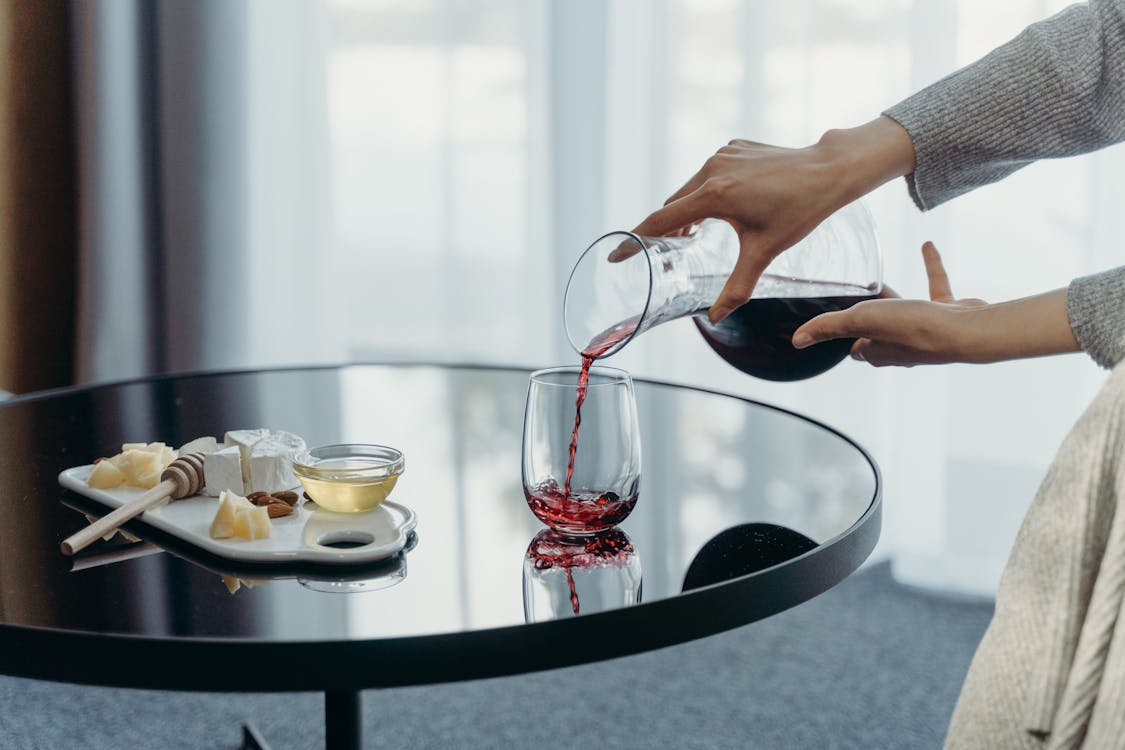
Proper service unlocks aroma.
Small steps unlock aromas you already own.
- Temperatures: sparkling 6-8 °C; whites and rosé 8-12 °C; Pinot or Grenache 14-16 °C; Cabernet or Syrah 16-18 °C.
- Decanting: young structured reds 30-90 minutes; older delicate bottles brief splash to remove sediment.
- Glassware: tulips for aromatics; larger bowls for big reds; use flutes only if you prefer tight bubbles.
- Preservation: vacuum stoppers for two days; Coravin for selective pours.
Deep-dive upgrades
Use a Durand on older corks; filter funnel for sediment; pre-rinse decanter with wine. Stand older bottles upright 24-48 hours; shine light behind the neck while pouring. Chill reds to 14-15 °C, let climb in glass; pour whites at 9-10 °C to bloom. Champagne disgorgement matters; brief carafe can soften mousse. For leftovers, argon for reds, fridge all with a stopper, and warm gently.
Precision add-ons
Champagne pressure is 5-6 atmospheres; warm service risks gushing. Coravin standard needle ~ 18 gauge; vintage needle is narrower; one argon capsule yields about fifteen 150 ml pours. Decanter size 1.0-1.5 L for young structure, 0.75 L for older wines. Vacuum holds 24-48 hours; Coravin 4-8 weeks by style. Pour 120-150 ml for tastings and 90 ml for multi-course pairings.
Correct temps, right glass, thoughtful decanting deliver instant upgrades.
After service, safeguard longer-term value with provenance proof and risk controls.
Wine Provenance Verification, Security, And Insurance
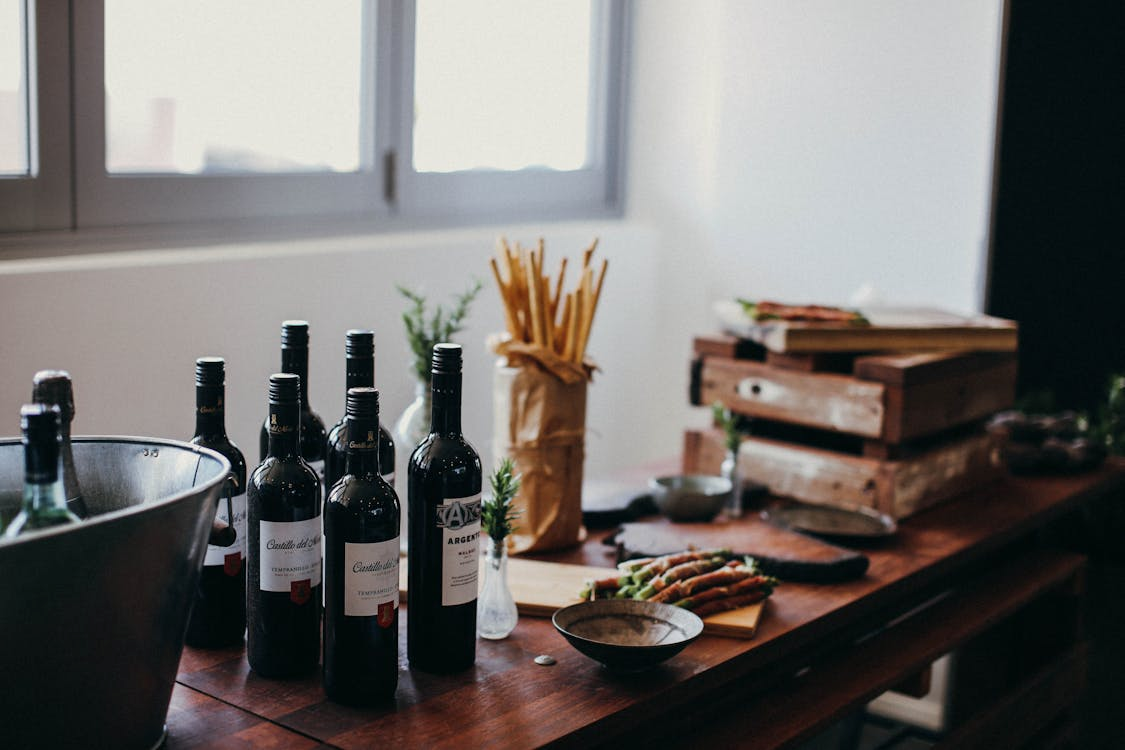
Complete documentation protects value.
Documentation maintains trust; caution avoids heartbreak.
Keep invoices, release emails, label and capsule photos, fill images, and storage setup notes. Watch for perfect labels on supposedly old bottles, suspiciously low prices, vague history, evasive sellers. Insure on a rider, update values yearly, photograph cases, log serials. Add locks, discreet delivery labels, and geofence alerts for offsite units.
Deep-dive upgrades
Check glass mold codes, cork branding, capsule embossing, and glue halos under labels. Keep a single PDF per bottle with all documentation. Confirm policy coverage for temperature loss, breakage, transit, earthquake; list offsite addresses; set agreed values. Use cold chain in warm months, avoid Friday dispatch, request hold for pickup.
Precision add-ons
Schedule limits at fair market value plus 10% and review annually. Hardware: anchors ≥ 4 kN pull-out, 5-pin locks, 180-degree viewers. Cameras 1080p, 15 fps, IR night vision, motion alerts limited to rack zones. Six-bottle shippers with 35-45 mm EPS walls and gel packs keep interiors 10-18 °C for 48 hours.
Paper trail plus insurance equals confidence when trading or moving.
With risk handled, sharpen tasting to buy smarter next time.
Tasting Practice to Refine Palate and Buying Strategy
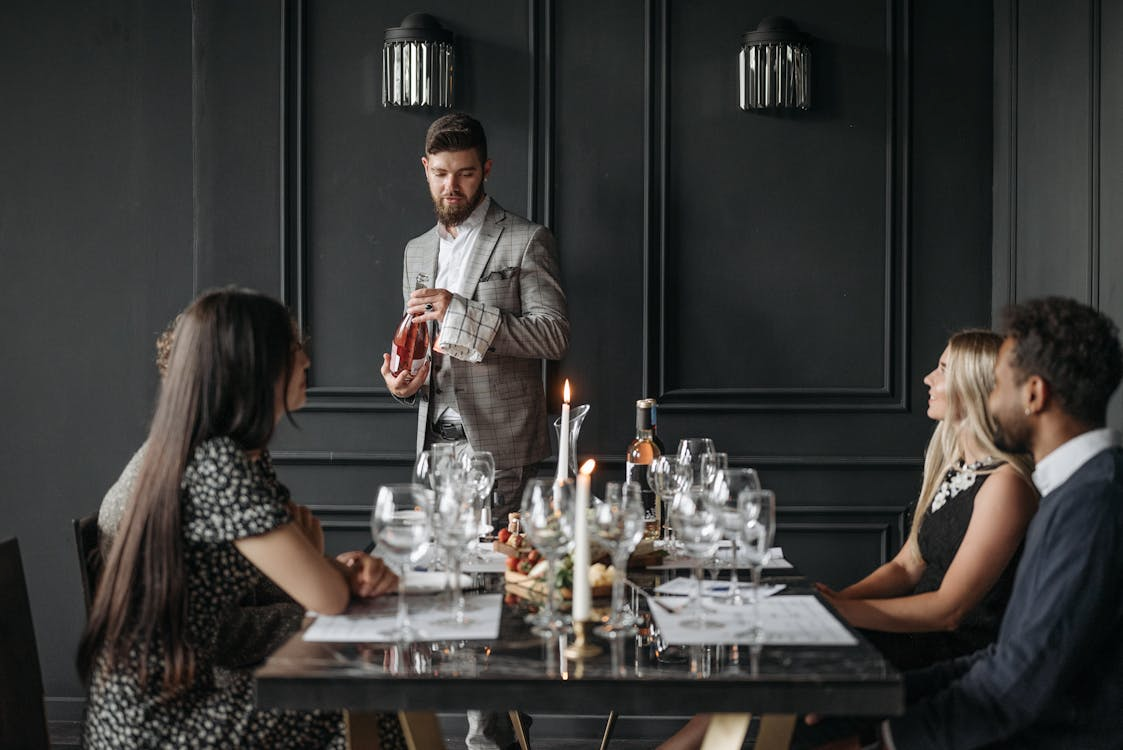
Deliberate notes drive better choices.
Short feedback loops guide future allocations.
Use a three-line note: what you smelled and tasted, how texture felt, what you wanted more or less of. Run mini flights of the same grape across regions, verticals across vintages, and food tests across two dishes.
Deep-dive upgrades
Calibrate descriptors with ladders such as lemon to lime to yuzu and cranberry to cherry to strawberry and graphite to mushroom to forest floor. Drill structure by salivation time, gum friction, and stopwatch finish length. Blind brown-bag a pair such as Langhe Nebbiolo vs Barolo. After notes, take one action: add two toward a winning style and cut one that disappointed.
Precision add-ons
Run 90-minute sessions with 60-90 ml pours; log within ten minutes. Finish short under ten seconds, medium ten to twenty, long over twenty. Record pH ranges such as Riesling 2.9-3.2 and Cabernet 3.5-3.8. Estimate new oak where published such as 20-40% and map your preference.
Focused notes turn intuition into pattern recognition.
Patterns in hand, refine budgets and channels for better value extraction.
Wine Budget Strategy, Formats, and Buying Channels
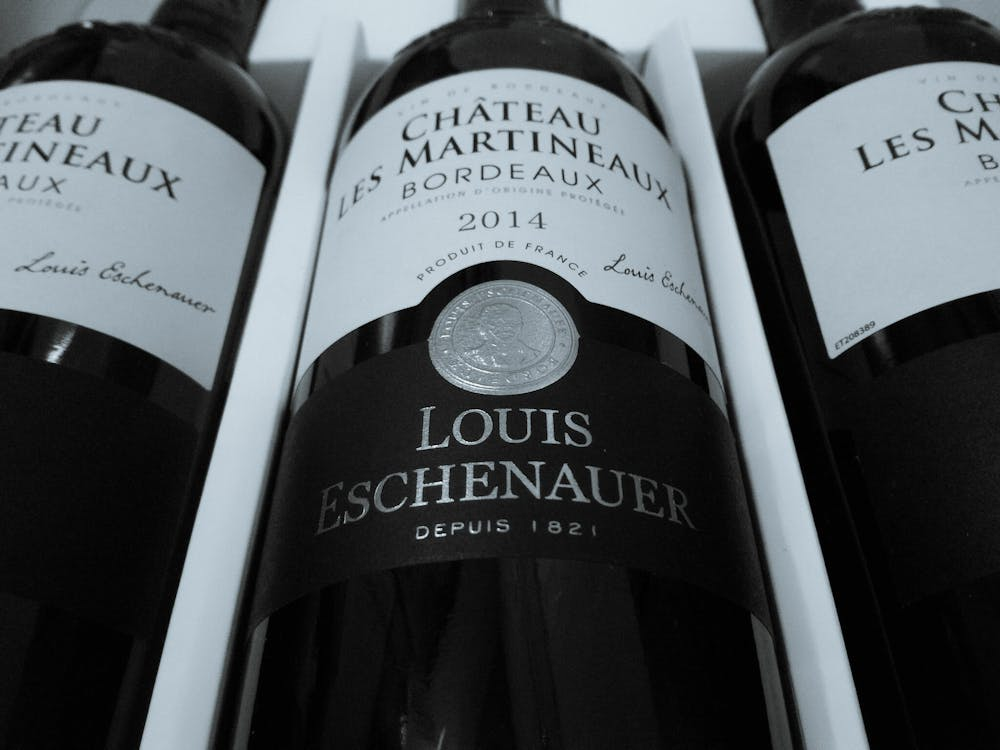
Smart timing stretches budget.
Value comes from timing, formats, and channels.
Formats: magnums for celebrations, halves for Tuesday tastings. Timing: release for scarce wines, end of vintage for ready whites. Channels: winery lists and trusted retailers for storage certainty, auction for back vintages, merchants with buy-back policies. Bundles: mixed six packs from serious producers for breadth at lower bottle cost.
Deep-dive upgrades
Stack deals by combining case discounts and club credits; negotiate shipping on multi-case orders; ask about library releases when building verticals. Cap monthly spending and keep surplus in a cellar fund. Compare offsite fees to fridge electricity; sell misfits to free carrying costs. In grey markets accept only temp-logged or pro-stored offers; favor in-bond if you might resell.
Precision add-ons
A 200-bottle fridge uses 200-300 kWh per year at £0.30 equals ~ £60-£90. Offsite is £10-£20 per case per year, lower above 20 cases. Auction shipping is £20-£40 per case domestic, £60-£120 international, insurance 1-2%. If carrying plus opportunity cost exceeds 8-10% yearly, drink or sell.
Smart formats and timing stretch budgets while raising quality.
With money dialed, plan seasonal restocks so shelves stay relevant.
90-Day Wine Cellar Starter Plan and Milestones
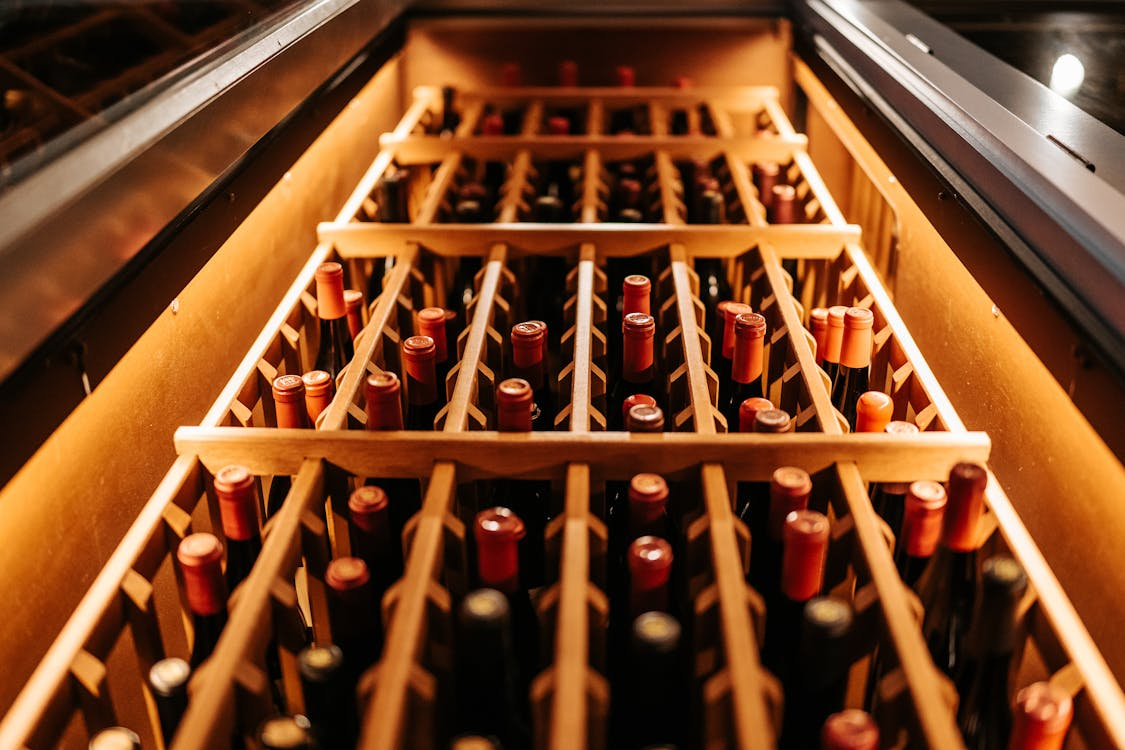
Small steps build momentum.
Simple cadence prevents overwhelm.
- Week 1: finalize purpose, budget, and storage; order racks or fridge; set up inventory.
- Weeks 2-4: purchase six everyday bottles, six cellar candidates, two celebration bottles.
- Month 2: add one new region such as Etna Rosso or Priorat or Tasmanian sparkling.
- Month 3: attend a tasting; write ten notes; sell or gift misfits.
Deep-dive upgrades
Targets: everyday ≤ £20-£30, cellar £30-£70, celebration £60-£150+. Schedule two flights in Month 2 such as Albariño vs Muscadet and Chianti Classico vs Montepulciano d’Abruzzo. End Month 3, archive underperformers, rebalance, and pre-commit Month 4 funds to the next vertical. Rehearse one decant, one Coravin, one Champagne service with disgorgement logging.
Precision add-ons
Acquire fourteen bottles in Month 1, ten in Month 2, six in Month 3 for thirty total; write fifteen notes by Day 90. Time blocks: forty-five minutes inventory setup; twenty minutes per purchase session; ten minutes per logging step; fifteen minutes relabeling. Budget pace 45% then 35% then 20%.
Small, steady actions build a coherent collection fast.
Momentum established, curate edges so personality shines through.
Adding Unique Wines Without Disrupting Cellar Balance
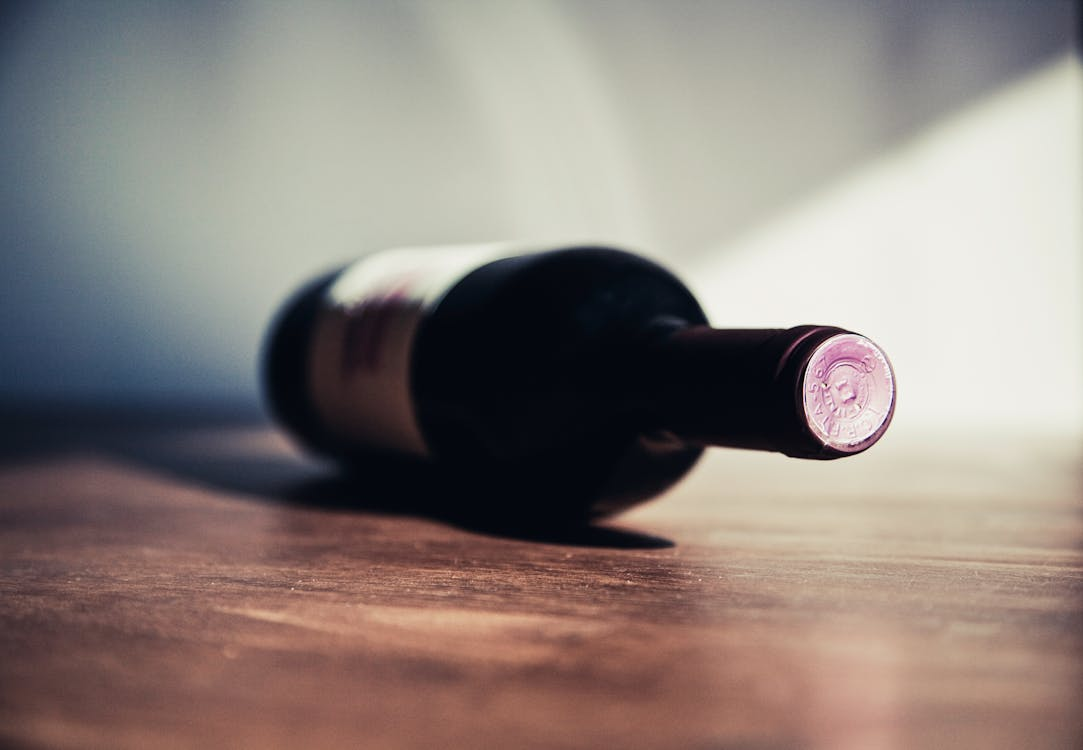
Curated outliers add character.
Distinct bottles create stories without chaos.
Ideas include single-vineyard Riesling with age, grower Champagne from small villages, old-vine Zinfandel, amphora whites, birth-year Madeira. Cap personality picks at 10% of count.
Deep-dive upgrades
Seek site-specific bottlings with cru or steep slate or high terraces. Anchor to life milestones with durable Madeira, Port, and top Champagne. Slip in a few 1.5 L for drama and slower aging.
Precision add-ons
Madeira or Vintage Port can thrive 30-100 years; prestige Champagne often peaks 15-30 years after vintage. Hold quirky pieces to ≤ 1 per 10 bottles and review quarterly. Add two or three targeted purchases yearly that fill gaps such as a 1,200-1,500 m Malbec.
Character bottles add soul while ratios keep order intact.
Personality secured, align drink windows so nothing dies in storage.
Managing Wine Drink Windows and Shelf Tagging
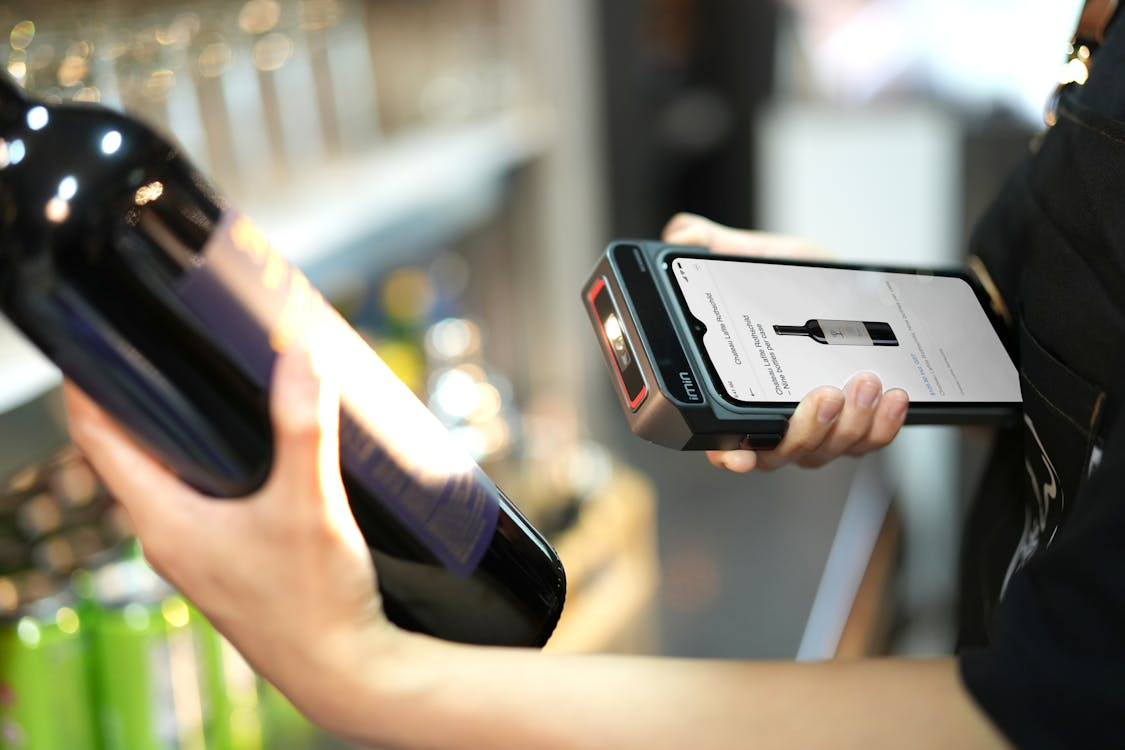
Open at the right time or miss magic.
Use producer, critic, and community guidance. Tag shelves as open now, hold short, and hold long. Set calendar nudges for narrow windows such as Barolo 8-10 years, vintage Champagne 10-20, Sauternes 15-40 depending on producer.
Deep-dive upgrades
Use vintage conditions, producer oak and extraction, closure, and format to model windows; magnums add roughly 30-50%. When a six pack nears its window, open one and log, then accelerate or delay. If provenance is uncertain, drink earlier. Browning whites, brickish reds, and weeping corks suggest drink now.
Precision add-ons
Tag colors: green open now, amber hold 1-3 years, red hold 4-15+. Set reminders six months before earliest and six months before latest window. Sample one per six when entering window and retest at 12-18 months. Watch racks that have been under 50% RH for over sixty days.
Simple shelf tags and reminders convert guesswork into timing confidence.
Windows sorted, your setup can now support trades or sales if goals shift.
How to Trade, Gift, or Sell Wine Responsibly
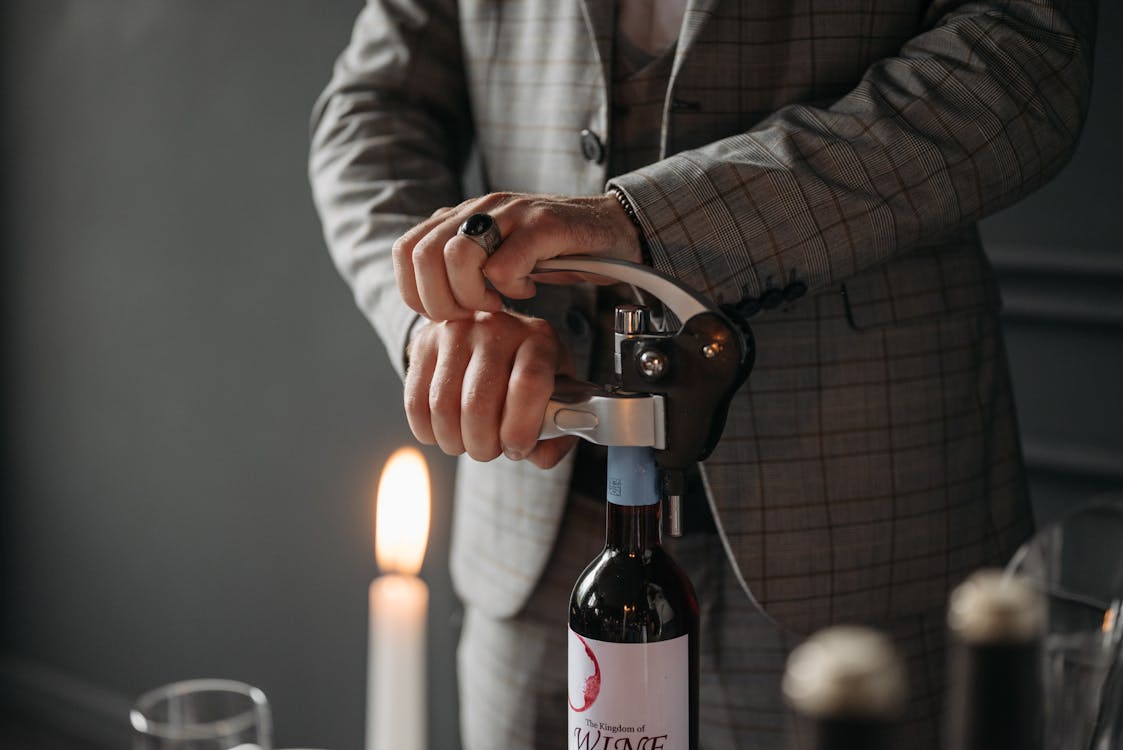
Timed openings maximize enjoyment.
Planned exits maintain relevance.
Edit ruthlessly to keep relevance high.
Trade or sell duplicates, styles you outgrew, misfits for your cooking. Gift mismatched singletons to friends who will love them. Use consignment, reputable auctions, or escrow platforms.
Deep-dive upgrades
Compare seller fees 8-20%, payout timelines, reserves, and shipping liabilities. Provide invoices, storage photos, cork and ullage images, and notes to lift hammer price. Track gains and losses per jurisdiction. Sell ahead of peak windows for wider bidder pools and avoid periods with estate-sale floods.
Precision add-ons
Expect settlement 21-45 days; expedited payouts may cost 1-2%. Set reserves at 80-90% of conservative market value. Double-box with 50 mm padding, tamper seals, and record parcel weight to ± 50 g.
Tight edits maintain focus and free budget for better fits.
Keep the loop going: plan, store, buy, track, taste, refine, repeat.

